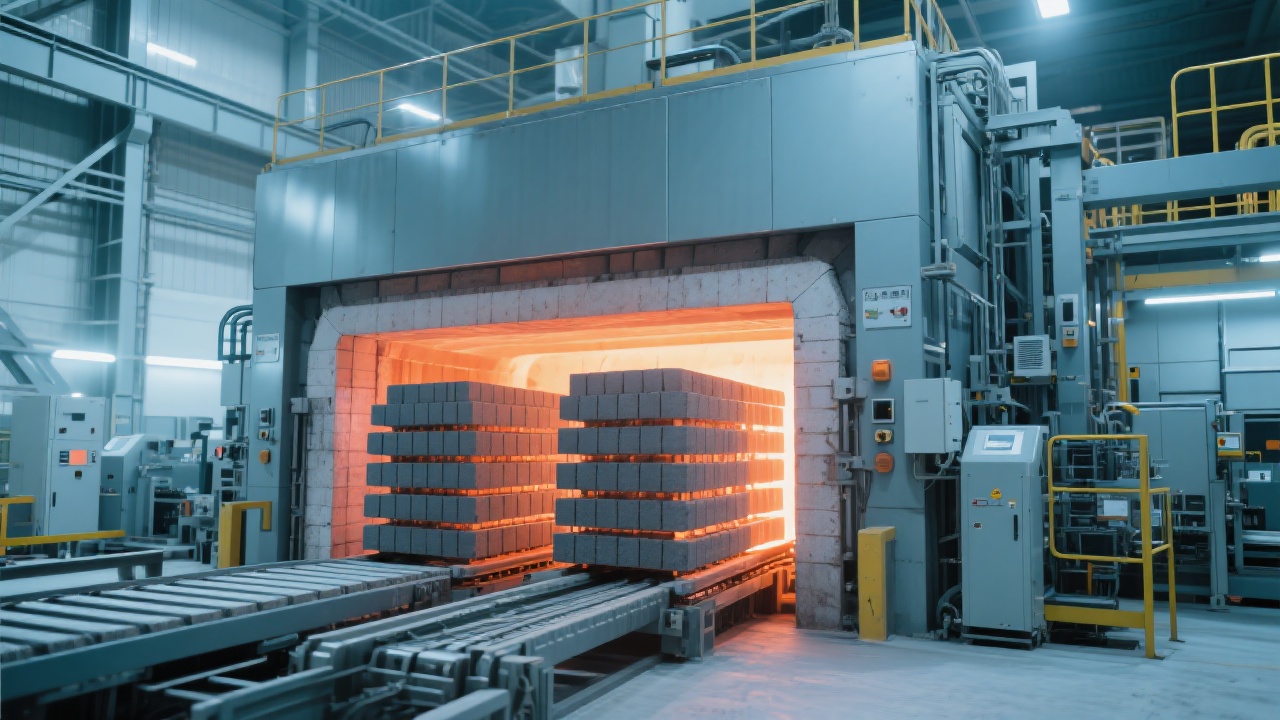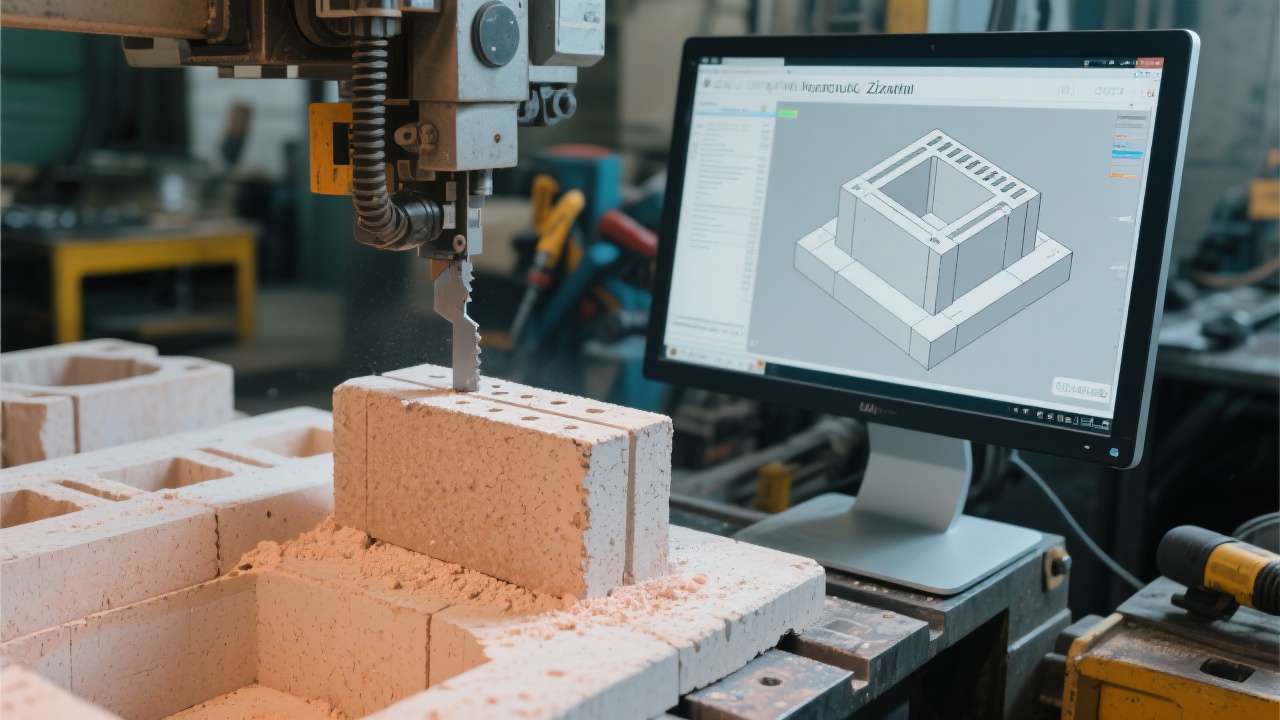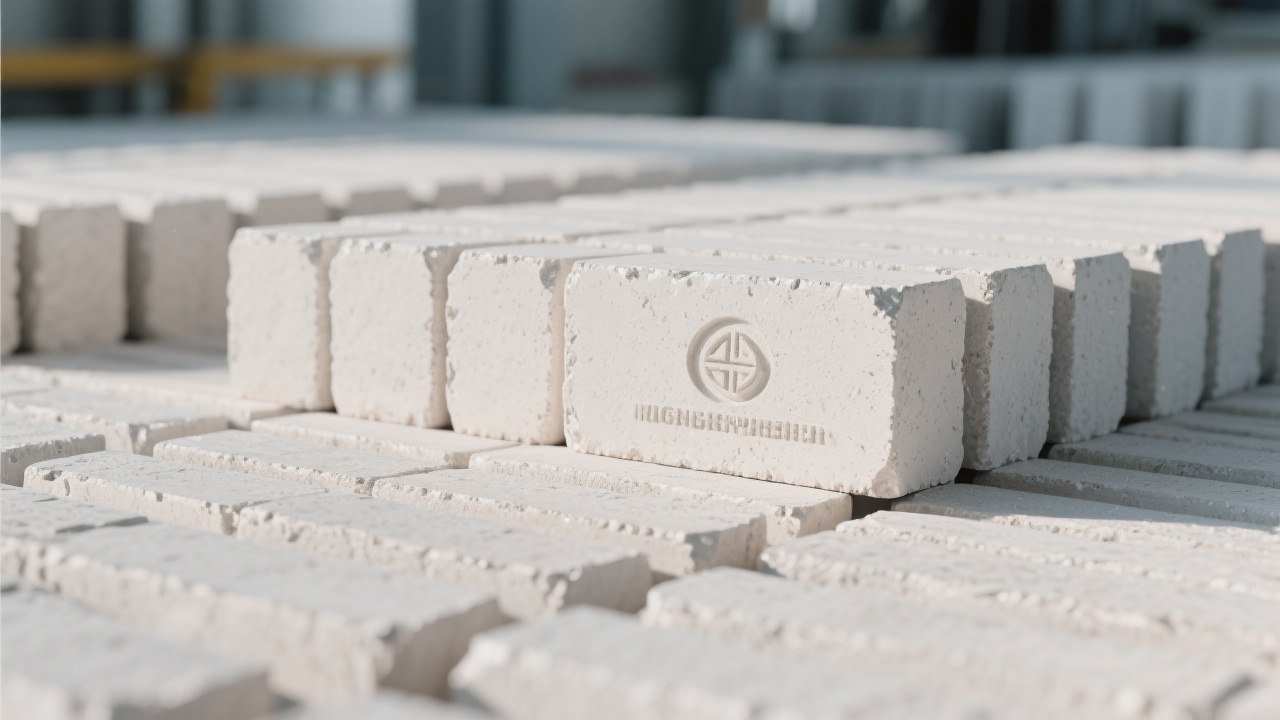
Fused AZS cast blocks are renowned for their outstanding high - temperature corrosion resistance, making them an ideal choice for the upper structures of glass melting furnaces. These blocks are composed of Al₂O₃, ZrO₂, and SiO₂, and their unique配比 (composition) significantly influences their performance. The Al₂O₃ provides high hardness and wear resistance, ZrO₂ enhances thermal shock resistance, and SiO₂ contributes to the formation of a dense structure.
From a materials science perspective, the dense structure of fused AZS cast blocks is formed during the melting and casting process. The precise control of the Al₂O₃ - ZrO₂ - SiO₂ ratio ensures that the block has excellent wear resistance, thermal shock resistance, and chemical stability. For example, in a well - formulated AZS block, the Al₂O₃ content might be around 50 - 60%, ZrO₂ around 30 - 40%, and SiO₂ around 10 - 20%, which creates a synergistic effect to enhance the overall performance of the block.

In the upper structure of glass melting furnaces, fused AZS cast blocks play a crucial role. In the sidewalls, they are exposed to high - temperature flames and corrosive gases. The excellent wear resistance of AZS blocks ensures that the sidewalls can withstand the scouring of high - velocity hot gases and the impact of glass particles, reducing the wear rate. For instance, in a large - scale glass manufacturing plant, the use of AZS blocks in the sidewalls has reduced the wear rate by up to 50% compared to traditional materials.
In the charging channels, where the glass raw materials are fed into the furnace, the AZS blocks' high - temperature corrosion resistance is fully utilized. The raw materials often contain various chemical substances that can corrode the furnace lining at high temperatures. The chemical stability of AZS blocks prevents such corrosion, ensuring the smooth operation of the charging process.

A European glass manufacturer was facing the problem of short equipment lifespan and high maintenance costs in their glass melting furnaces. The traditional furnace lining materials could only last for about 1 - 2 years, and the annual maintenance cost was as high as €500,000. After replacing the lining materials with fused AZS cast blocks in the upper structure, the equipment lifespan was extended to 5 - 6 years. Moreover, the annual maintenance cost was reduced to €100,000, a significant reduction of 80%.
Another case is an Asian glass factory. Before using AZS blocks, they had a high rate of product defects due to the erosion of the furnace lining. After the application of AZS blocks, the defect rate decreased from 8% to 2%, greatly improving the quality of the glass products and the overall production efficiency.
Proper installation is crucial for the performance of fused AZS cast blocks. During installation, it is necessary to ensure a tight fit between the blocks to prevent hot gas leakage. The installation surface should be flat and clean to avoid stress concentration.
For maintenance, regular inspections should be carried out to check for any signs of wear, cracking, or corrosion. If any problems are found, timely repairs or replacements should be made. Additionally, maintaining a stable operating temperature in the furnace can also extend the service life of the AZS blocks.

Fused AZS cast blocks offer significant advantages in the upper structures of glass melting furnaces, including extended equipment lifespan, reduced maintenance costs, and improved product quality. If you are looking for a reliable solution for your glass melting furnace, don't miss out on the opportunity to upgrade to fused AZS cast blocks. Click here to learn more about how fused AZS cast blocks can transform your glass manufacturing process!

